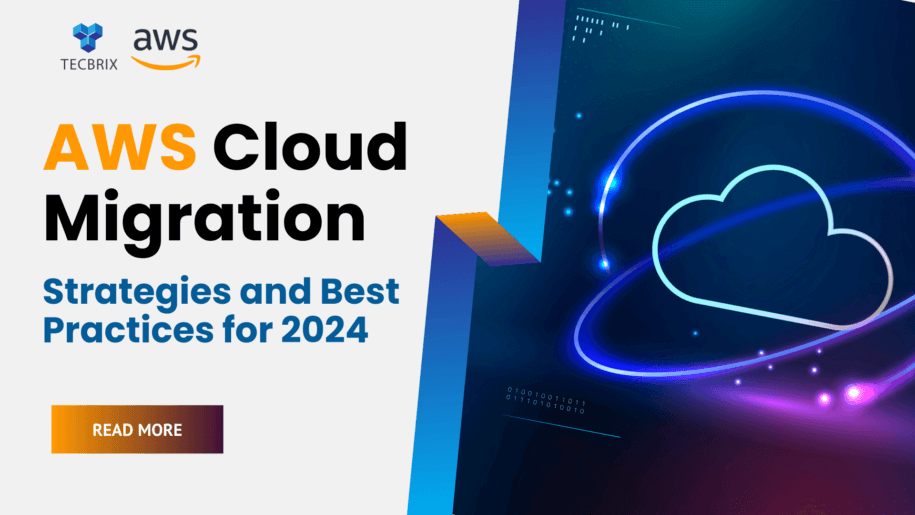In today’s fast-paced digital world, cloud computing has become a cornerstone for business innovation and growth. Amazon Web Services (AWS), a front-runner in cloud services, offers scalable, efficient, and flexible solutions for organizations embarking on their Cloud Migration journey. This comprehensive guide explores the motivations behind AWS Cloud Migration, discusses the 7Rs of Cloud Migration Strategy, recounts Priority Software’s successful cloud transition, delves into critical AWS Cloud Migration Strategies, and elucidates how TecBrix can facilitate this necessary transformation.
Why Companies Want to Migrate to The Cloud
Companies are eager to migrate to the cloud to leverage its agility and scalability, allowing them to rapidly adjust to changing market demands and scale resources as needed.
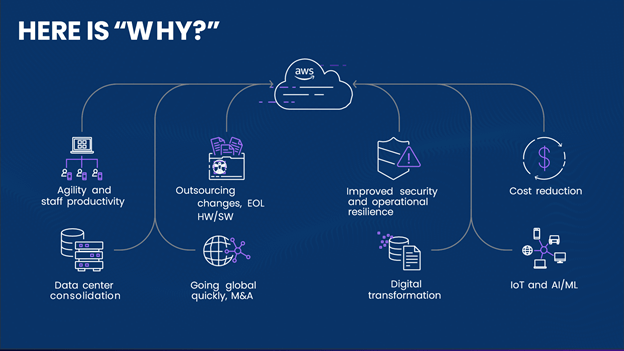
Additionally, cloud adoption offers cost savings, improved data security, and enhanced collaboration, driving its appeal for modern businesses. Consider the following factors for the effective efficiency.
1. Cost Efficiency
Migrating to the cloud significantly reduces the need for heavy investments in IT infrastructure, leading to substantial cost savings.
2. Scalability And Flexibility
The ability to scale resources dynamically with business needs is a hallmark of cloud computing, offering unparalleled flexibility.
3. Innovation and Agility
Cloud platforms offer unparalleled access to cutting-edge technologies, enabling businesses to innovate and adapt rapidly to changing market dynamics.
4. Enhanced Security
Top-tier cloud providers like AWS invest in state-of-the-art security measures, offering better protection than most in-house solutions.
5. Global Reach
The cloud’s globally distributed network facilitates easy expansion into new markets, allowing businesses to quickly scale operations internationally and efficiently manage data across multiple regions, adapting to diverse market needs.
The 7Rs of AWS Cloud Migration Strategies
The 7Rs of AWS Cloud Migration Strategy refer to the seven approaches (Rehost, Refactor, Rearchitect, Replatform, Repurchase, Retire, and Retain). Organizations can use it to plan and execute their migration to the AWS cloud, each catering to specific business needs and goals.
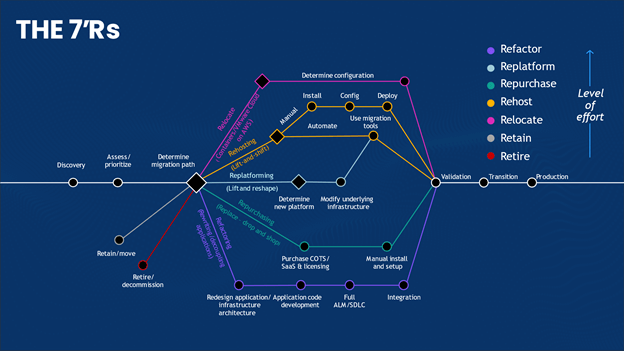
1. Refactor:
This strategy makes significant modifications to the application’s code to adapt and optimize it for the cloud environment. Refactoring is more than just a lift-and-shift; it’s a comprehensive redesign of applications to leverage cloud-native features like auto-scaling, elasticity, and serverless capabilities. This approach is often applied to legacy applications that require an overhaul to exploit the cloud’s full potential. It can lead to improved performance, better scalability, and, often, enhanced security. However, refactoring is a resource-intensive process and requires a deep understanding of both the application and the cloud platform.
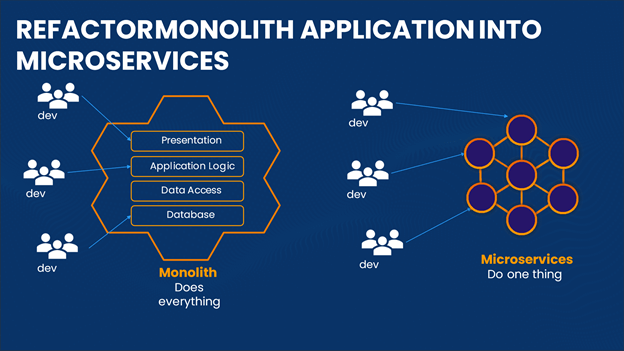
2. Replatform:
Replatforming strikes a balance between the simplicity of rehosting and the complexity of refactoring. It involves making minimal changes to the application, like altering the database to use a managed service or integrating with cloud-native monitoring tools, to gain some benefits of the cloud without a complete overhaul. This strategy is ideal for businesses that want to see improved performance or reduced costs but are not ready or do not need to refactor their applications for the cloud entirely. Replatforming can provide a middle ground, offering particular efficiencies and enhancements while keeping the core application architecture intact.
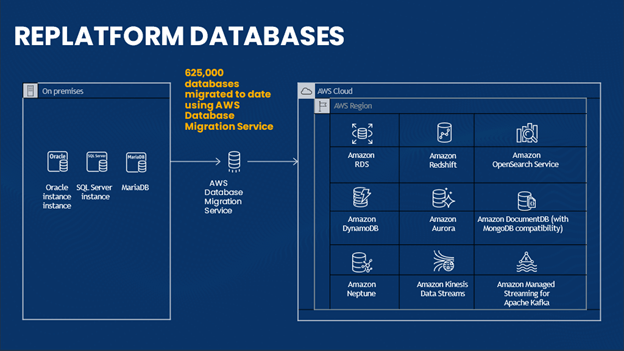
3. Repurchase:
Often referred to as a “drop-and-shop” approach, repurchase involves moving to a different product or service, usually a cloud-native solution. This strategy is typically used when an existing on-premises solution becomes obsolete, too costly, or too cumbersome to maintain. For instance, moving to a SaaS model can provide more functionality and better scalability, with less maintenance required by the user. Repurchase is a strategic decision enabling an organization to modernize its IT infrastructure rapidly and leverage the latest technological advancements in the cloud.
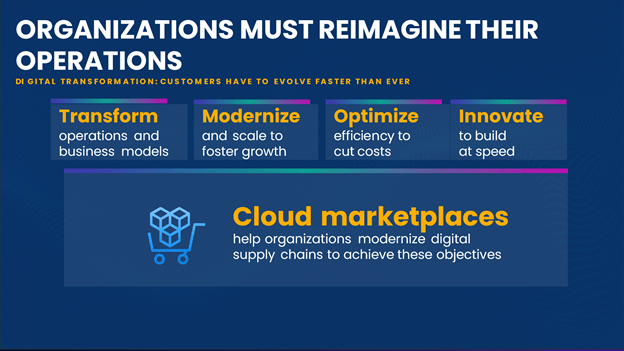
4. Rehost:
The ‘Lift and Shift’ method is a straightforward approach where existing applications are migrated to the cloud with no or minimal changes. This strategy is often favored for its simplicity and speed, allowing organizations to quickly benefit from cloud services like reduced physical data center dependencies and cost savings. It is particularly appealing for companies looking to migrate many applications in a short time frame. However, while rehosting is quick, it may not allow applications to fully utilize cloud-native features, potentially leading to missed opportunities for optimization and innovation.
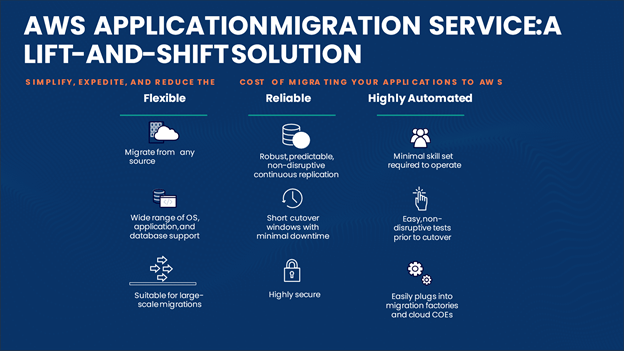
5. Relocate:
Relocation is a specific type of Cloud Migration Strategy that primarily focuses on moving containerized applications or workloads. This strategy leverages container technology, such as Kubernetes, to facilitate migration. By containerizing applications, they become more portable and can be moved to the cloud with fewer compatibility issues. This approach is gaining popularity as it combines the simplicity of rehosting with some of the benefits of more cloud-native methodologies, offering a practical path for businesses transitioning towards a more cloud-centric infrastructure.
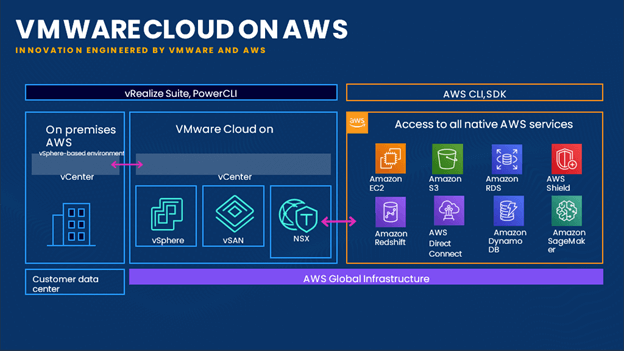
6. Retain:
Opting to retain specific applications or systems on-premises is a strategic choice often driven by regulatory, compliance, or technical reasons. In some cases, applications are tightly integrated with existing hardware, or data residency requirements might necessitate keeping data within a specific geographic location. The retail strategy involves a careful assessment to decide which applications are not suitable for AWS Cloud Migration at the current time, acknowledging that they might be reconsidered for future Cloud Migration as circumstances change.
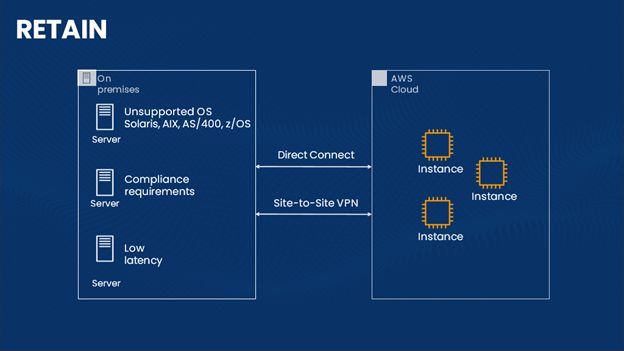
7. Retire:
During migration assessment, it’s common to identify legacy systems or applications that are no longer necessary or beneficial. Retiring these systems can streamline operations and lead to cost savings. This strategy is about cleaning the IT environment – decommissioning outdated, redundant, or underutilized resources. It’s an essential step in optimizing the IT portfolio, ensuring that resources are focused on maintaining and developing applications that provide real value to the business.
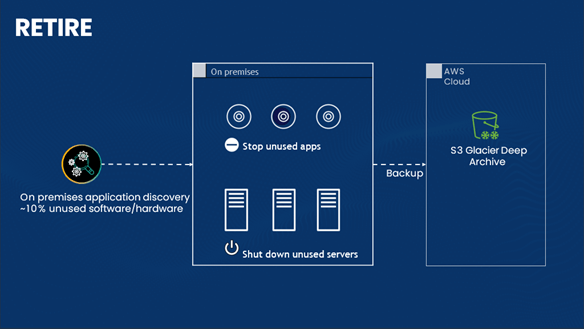
AWS Cloud Migration Strategies And Best Practices
AWS Cloud Migration Strategies And Best Practices encompass a set of guidelines and methodologies designed to help organizations seamlessly transition their IT infrastructure to the cloud while maximizing performance, security, and cost-efficiency. These strategies emphasize careful planning, risk assessment, and continuous optimization to ensure a successful migration journey. Let’s discuss one by one.
1. Detailed Assessment And Planning
A comprehensive review of the existing IT setup is essential, focusing on application dependencies, data flows, and potential migration challenges. This step is crucial for creating a migration roadmap that aligns with the business objectives and minimizes disruptions.
2. Choosing The Right Strategy
Selecting a migration strategy from the 7Rs that aligns with your business goals and IT architecture is vital. This decision should balance costs, time, and potential for future scalability and flexibility.
3. Emphasizing Security And Compliance
Security and regulatory compliance must be at the forefront. This involves adapting to cloud-specific security models and ensuring all migrated data and applications comply with industry regulations.
4. Building a Competent Team
Developing a skilled team or partnering with experts is critical. This team should deeply understand your existing IT environment and the nuances of cloud technology.
5. Performance Monitoring And Optimization
Continuous monitoring of cloud resources is necessary for ensuring optimal performance and security. Regular evaluations help in fine-tuning the infrastructure for cost-effectiveness and improved functionality.
AWS Migration Strategies and Best Practices – AWS Webinar | TecBrix Cloud
How TecBrix Can Help?
TecBrix specializes in guiding organizations through their Cloud Migration journey as an AWS Cloud Consulting Partner offering:
- Customized Migration Plans: TecBrix as an AWS Cloud Consulting Partner offers tailored strategies aligning with your business needs and IT infrastructure, ensuring a smooth AWS Cloud Migration.
- Expert Guidance And Consultation: Our experts provide comprehensive support throughout the migration process, advising on best practices and effective strategies.
- Security And Compliance: We ensure that your migration meets the highest security standards and abides by all applicable regulations.
- Ongoing Support And Management: Post migration, we offer continuous support and management to keep your cloud environment optimized.
- Cost Optimization: We assist in managing and optimizing cloud expenses to ensure cost-effective operation.
With AWS Cloud Consulting Partner like TecBrix, you gain a skilled and reliable partner for a seamless and successful Cloud Migration journey.
Conclusion
Cloud Migration Strategy is a step towards a more agile, efficient, and secure business environment. Understanding the nuances of AWS Cloud Migration Strategies, combined with the expertise and support from a knowledgeable partner like TecBrix Cloud, can transform this journey into a pivotal moment of growth and innovation for any organization.
